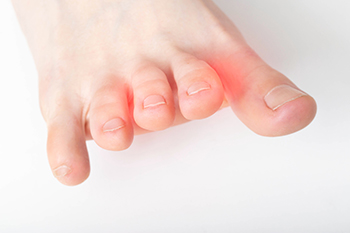
Morton’s neuroma is more than just foot pain. It is a disruption to daily comfort. This condition, caused by the thickening of nerve tissue between the toes, often feels like a burning sensation, tingling, or the feeling of a pebble stuck in your shoe. Wearing high heels and tight footwear worsen the issue, making each step a painful reminder. Beyond physical discomfort, Morton’s neuroma can limit activity, forcing people to cut back on exercise or even simple walks. Ignoring the symptoms can lead to chronic pain and altered gait, creating additional strain on other joints. Early intervention is key to preventing further nerve damage and keeping you mobile. If foot pain is affecting your routine, it is suggested that you visit a chiropodist for a diagnosis and appropriate care.
Morton's neuroma can be highly uncomfortable. If you are experiencing the symptoms of Morton's neuroma, please consult with one of the chiropodists from Complete Family Footcare & Therapy. Our clinicians will assess your condition and provide you with quality foot and ankle treatment.
What Is a Morton’s Neuroma?
Morton’s neuroma is a condition in which a nerve located in the ball of the foot between the third and fourth toes thickens due to compression or irritation. Common causes of Morton’s neuroma include wearing shoes with high heels or narrow toe boxes, participating in running or court sports, an injury or trauma to the area, or pressure being placed on the nerve from foot deformities such as bunions or hammertoes. Left untreated, Morton's neuroma may result in permanent nerve damage.
Symptoms
Symptoms of Morton’s neuroma often start gradually and worsen over time. Typical symptoms include:
Foot pain
Tingling, burning, or numbness in the affected foot
The unique sensation that something is inside the ball of the foot or that there is something stuck in your shoe while walking
Treatment
Non-surgical treatments for this condition may include padding or icing the affected foot, wearing an orthotic device, modifying activities or shoes to reduce pressure on the foot, and taking medications or getting injections to reduce pain and inflammation. Surgery may be needed if non-surgical treatments are ineffective.
If you have any questions, please feel free to contact our offices located in . We offer the newest diagnostic and treatment technologies for all your foot care needs.
